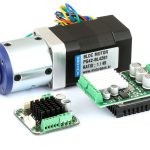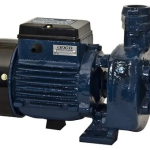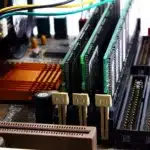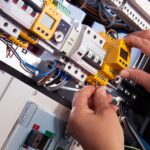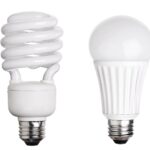
Introduction
Effective asset management is significant for success in today’s fast-paced business environment. Whether you’re running a warehouse, managing a fleet of vehicles, or overseeing a manufacturing facility, knowing the whereabouts and status of your assets is essential for optimized operations and reduced costs. This is where IoT (Internet of Things) asset tracking systems come into play–leveraging sensors and connectivity to provide real-time insights into the location, condition, and performance of your assets. However, with the multitude of options available, choosing the right IoT asset-tracking system can be a daunting task that requires crucial considerations. This article outlines the most important tips to consider when selecting an IoT asset tracking system.
Understanding IoT Asset Tracking System and Its Benefits
An IoT asset tracking system is a technology solution that leverages IoT devices and connectivity to monitor and manage physical assets in real time. These assets can include vehicles, equipment, inventory, containers, or any other valuable items that need to be tracked for various purposes, such as security, efficiency, operations optimization, and enhanced customer services.
Choosing an IoT Asset Tracking System: Crucial Tips to Consider
Choosing an IoT asset tracking system is an essential decision for businesses and organizations looking to monitor and manage their assets efficiently. These tips will facilitate enterprises to make an informed decision which includes:
1. Define Your Needs and Objectives
Defining specific needs and objectives is the foremost consideration before starting a selection process. Different organizations have varying requirements based on the nature of their assets, the scale of operations, and their industry. Understanding and clarifying your goals will help narrow down the best possible options and focus on the features that matter most to your business. Start by answering questions like:
- What types of assets do you need to track? (e.g., vehicles, equipment, inventory)
- What level of accuracy and real-time tracking is required?
- Are there any environmental or regulatory constraints to consider?
- What is your budget for the asset tracking system?
2. Consider the Type of Assets You’re Tracking
The type of assets you intend to track will heavily influence your choice of an IoT asset tracking system. Assets can vary widely, from vehicles and equipment to inventory and containers. Some IoT tracking solutions are tailored to specific asset types, so it’s essential to choose a system that is compatible with your asset portfolio. Additionally, consider the size and form factor of your assets, as this can impact the choice of tracking devices and sensors.
3. Evaluate Connectivity Options
Connectivity is a critical aspect of IoT asset tracking systems. A reliable network connection can transmit data from the tracking devices to your central system. There are various connectivity options available, such as cellular, Wi-Fi, Bluetooth, and LPWAN (Low-Power Wide-Area Network). The choice of connectivity will depend on your specific use case and the coverage available in your operating area. Ensure the selected system supports the necessary connectivity for your assets’ locations.
4. Assess Tracking Accuracy and Precision
One of the primary purposes of an IoT asset tracking system is to provide accurate and real-time location information. Different tracking technologies offer varying levels of accuracy and precision. GPS-based tracking is highly precise for outdoor assets but may struggle with indoor locations due to signal blockages. Indoor tracking solutions, such as RFID and Bluetooth beacons, excel in indoor environments but may provide a different accuracy outdoors. Consider the accuracy requirements for your assets and select a tracking system that meets those needs.
5. Battery Life and Maintenance
Batteries typically power IoT asset tracking devices, and the longevity of these batteries is a crucial consideration. The longer the battery life, the less frequent the need for maintenance and battery replacement. Evaluate the expected battery life of the tracking devices and whether they are rechargeable or require periodic battery replacement. A well-designed system should strike a balance between battery life and tracking frequency to meet your operational requirements.
6. Data Management and Analytics
An IoT asset tracking system generates a wealth of data, providing valuable insights into your operations. Consider the data management and analytics capabilities of the system you’re evaluating. Can it store historical data for analysis? Does it offer real-time alerts and notifications? Look for a system that provides robust data management tools and supports integration with your existing business intelligence and analytics platforms.
7. Scalability and Flexibility
With business growth, your asset tracking needs may evolve. It’s essential to choose a system that can scale with your business and adapt to evolving requirements. Assess the scalability of the IoT asset tracking solution and whether it can accommodate additional assets, sensors, or features as needed. A flexible system allows you to future-proof your investment and avoid the need for costly replacements or upgrades down the road.
8. Integration Capabilities
Integration with your existing systems and software is crucial for seamless operations–simplifying data sharing and streamlining processes, making it easier to leverage asset-tracking data for decision-making. Ensure the chosen IoT asset tracking system can integrate with your enterprise resource planning (ERP), warehouse management, and fleet management systems.
9. Cost Considerations
Last but not least, consider the total cost of ownership (TCO) when selecting an IoT asset tracking system. The upfront hardware and software costs are just one part of the equation. You should also factor in ongoing expenses, such as connectivity fees, maintenance, and support. Compare the TCO of different solutions and evaluate their return on investment (ROI) based on the improvements they can bring to your operations.
10. Pilot Testing
Before committing to a full-scale deployment, conduct a pilot test of the asset tracking system with a small subset of assets. This will help you identify any issues or adjustments needed before rolling out the solution company-wide.
Final Thoughts
Choosing the right IoT asset tracking system is a critical aspect–significantly impacting your business’s efficiency and profitability. By defining various needs, as mentioned above, enterprises can make informed choices that align with their business objectives. Investing in the right IoT asset tracking system can lead to improved asset visibility, enhanced operational efficiency, and a competitive edge in today’s dynamic business landscape.










